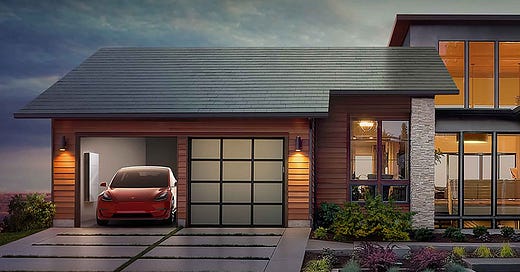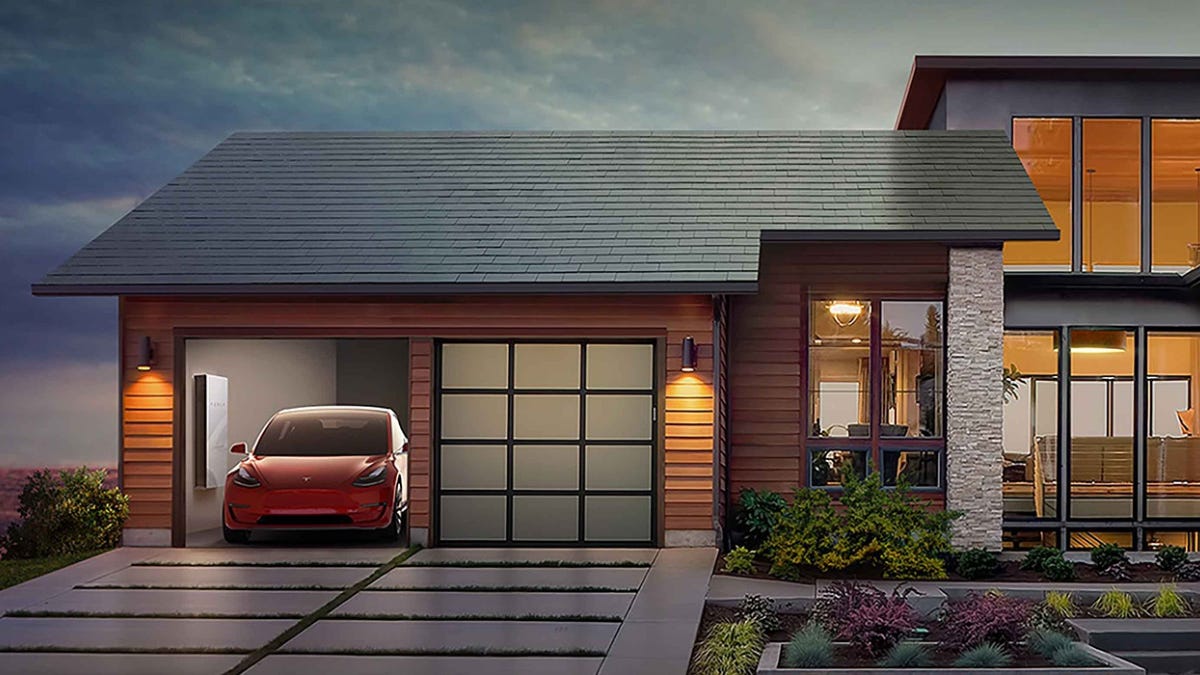Master Plan 3 is a conservative vision for the future
Elon Musk wants to electrify everything, while changing nothing else
Yesterday Tesla’s Technoking Elon Musk and an assembly line of executives assembled in Austin, Texas to outline Master Plan 3 and the elements of the business that will be essential to achieving it. They discussed everything from energy storage to the company’s supply chain to the autonomous driving fantasy that Tesla continues to maintain. There were hints of a new vehicle model, but nothing concrete beyond the promise of a future product event. Yet at the core of the presentation was an assertion Musk has been making for years: that all we really need to address the climate crisis is electrification.
To kick off the Investor Day, Musk and Drew Baglino took to the stage to lay out the grand vision at the center of Master Plan 3. Musk summarized the thrust of it as follows:
There is a clear path to a sustainable energy Earth. It doesn’t require destroying natural habitats. It doesn’t require us to be austere and stop using electricity and be in the cold or anything. … There is a clear path to a fully sustainable Earth with abundance. In fact, you could support a civilization much bigger than Earth; much more than the 8 billion humans could actually be supported sustainably on Earth. I’m often shocked and surprised by how few people realize this.
Let’s tease this out for moment. It’s well known that Musk is very preoccupied with birth rates and the total population of the planet: he wants it grow, and for certain people (rich, “smart”) to have more kids. He acts as though the global population is shrinking when it’s in fact doing the opposite, which suggests he’s concerned about the type or class of kids being born. In his statement, and the plan as a whole, he wants people to know that we can grow the human population without making sacrifices. He acts as though this is a rather novel observation, which probably shows how much he lives in his own bubble. Yes, there are those who argue that the human population needs to decline to address the climate crisis, but they’re very much in the minority.
What this statement is really saying is something that’s been at the core of Tesla since the beginning, or at least since Musk took over setting the vision: that we can keep everything the same while addressing the problem of emissions, as long as we electrify society. The image that Musk promotes as the sustainable future of that society is not one of vibrant urban communities where residents have easy access to the services they depend on and live close to the people they care about with good cycling facilities and public transit options they can rely on. No, it’s the suburban home with a solar roof and battery storage with a Tesla (or a few) in the garage that may some day drive you to the places you need to go because you don’t live near any of them. Like the conservatives in hysterics over shorter walking distances, Musk isn’t endorsing a 15-minute city.
As such, the Tesla vision is quite a conservative one. Yes, it does advocate an energy transition, but otherwise it wants everything to stay virtually the same: you’ll keep driving your car, living in a suburban home, working your increasingly shitty and precarious job, and having an ever-longer commute. But more importantly, someone like Elon Musk will also keep taking his private jet anywhere he wants, avoiding the public with spaces created to exclude them, and get to drive around so he doesn’t have to come in contact with real people. (He added bulletproof glass and dent-resistant panels to the large and imposing Cybertruck for a reason.)
Is this really a hopeful vision for the future, as Musk wants us to believe, or is it just hopeful for a billionaire who wants to keep living in luxury regardless of the emissions or environmental impact he produces?
There’s another element of the argument he’s making that’s worth calling attention to. In those opening remarks, he also says this is all possible without “destroying natural habitats” and later asserts that we don’t need to be worried about the mining that will required for such a future. He explains that with a mineral like lithium, supply isn’t a problem — there’s plenty of it around the world. But the real concern that many people have is the environmental impact of extracting that lithium — and all the other required minerals — from the ground.
The environmental effects of mining aren’t just the concerns of “woke left” environmentalists, but Indigenous peoples and local communities who are impacted by that extraction. It’s why there’s opposition almost anywhere a new mine is proposed. We hear more about it now, as North America and Europe seek to “reshore” mining it outsourced to the rest of the world, but it isn’t novel. Just as ranchers and Indigenous peoples were opposing the Thacker Pass lithium mine in Nevada, so too are groups in Latin America as they propose a post-extractive future for their continent instead of just being treated as a source of raw materials to supply the rest of the world. The expanding lithium mines in Latin America take fresh water from nearby communities, the nickel mining in Indonesia is utterly destroying the local environment and making people very sick, and extraction of cobalt in the Democratic Republic of Congo has a list of consequences that includes — but is far from limited to — child labor and the funding of militant groups. That’s led to concern that Tesla is relying on minerals extracted using child labor. Musk personally requested shareholders vote down a proposal last year that would’ve forced the company to report on its supply practices.
The Climate and Community Project recently released a report which calculated the amount of lithium necessary to achieve zero-emissions transportation could be substantially reduced with smaller electric vehicle batteries, more battery recycling, and, most importantly, a major reduction in car dependence. But the future they propose is in direct opposition to Tesla’s vision of continued reliance on personal vehicles. Instead, Master Plan 3 continues to assert that autonomous driving is essential so a fleet of robotaxis can transport people around cities — and it will require much greater computing resources to realize. It did not revive Master Plan, Part Deux’s proposal for a Tesla bus.
Efforts to expand renewable power, electric vehicles, and heat pumps — as Master Plan 3 advocates — are not bad things. Indeed, they’re essential to get us off fossil fuels. But it’s very concerning to see the larger vision that those endeavors are supposed to support. Elon Musk is explicitly narrowing people’s ideas of what the future could be to serve his personal desire to never have to be told that the lifestyles of billionaires like himself are fundamentally unsustainable, regardless of how much we electrify our society.
During the presentation, Musk said he was trying to convey “a message of hope and optimism.” Despite the rapidly escalating impacts of the climate crisis and the reality that neither companies nor governments are doing anything near the scale of what’s necessary to address it, I do remain hopeful. But I get very concerned when I see billionaires who say we need more oil and gas intentionally present a misleading vision for how we tackle the crisis that constrains our collective ability to imagine a future that challenges their interests and allows many more people to flourish than the fanboys who can afford to buy into the Tesla ecosystem.
We can — and must — do much better than the corporate future of Master Plan 3.





